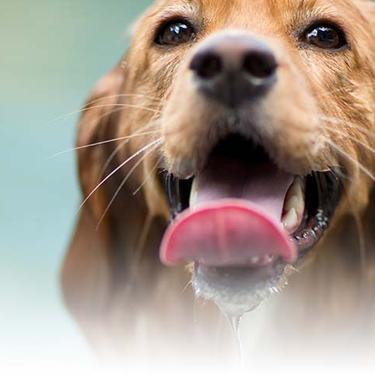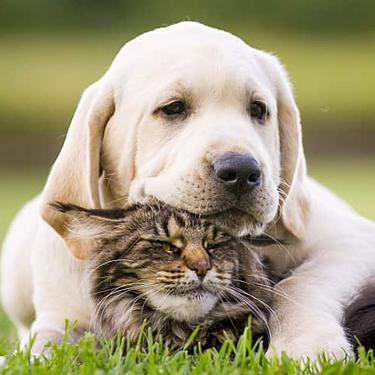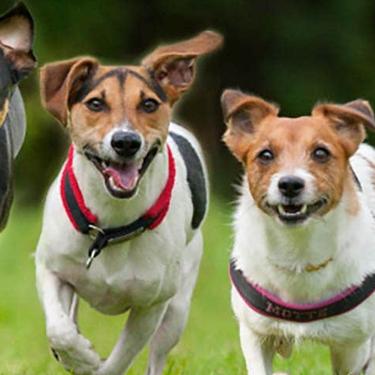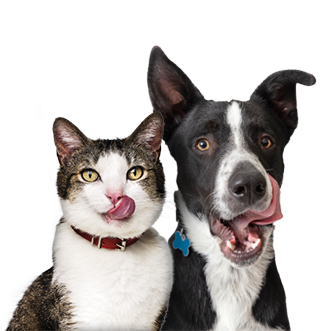
-
Find the right food for your pet
Take this quiz to see which food may be the best for your furry friend.
Find the right food for your pet
Take this quiz to see which food may be the best for your furry friend.
Featured products
 Adult 7+ Perfect Digestion Chicken, Whole Oats & Brown Rice Recipe Dog Food
Adult 7+ Perfect Digestion Chicken, Whole Oats & Brown Rice Recipe Dog FoodScience Diet's breakthrough nutrition supports ultimate digestive well-being & healthy microbiome for dogs age 7+
Shop Now Adult 7+ No Corn, Wheat, Soy Chicken & Brown Rice Dog Food
Adult 7+ No Corn, Wheat, Soy Chicken & Brown Rice Dog FoodSupports energy level and beautiful coat in mature dogs
Shop Now Adult Perfect Weight & Joint Support Chicken Recipe Dry Dog Food
Adult Perfect Weight & Joint Support Chicken Recipe Dry Dog FoodThis weight management and mobility support dog food was created with Hill’s unique understanding of the biology of overweight dogs.
Shop NowFeatured products
 Adult Perfect Digestion Chicken, Barley & Whole Oats Recipe Cat Food
Adult Perfect Digestion Chicken, Barley & Whole Oats Recipe Cat FoodScience Diet's breakthrough nutrition supports ultimate digestive well-being & healthy microbiome
Shop Now Perfect Weight Salmon & Vegetable Canned Cat Food
Perfect Weight Salmon & Vegetable Canned Cat FoodOver 70% of cats lost weight within 10 weeks when fed this nutrition
Shop Now Adult Savory Chicken Entrée Cat Food
Adult Savory Chicken Entrée Cat FoodPrecisely balanced nutrition with the delicious taste of savory minced chicken to help fuel the energy needs of cats during the prime of their life
Shop Now -
Dog
- Dog Tips & Articles
-
Health Category
- Weight
- Food & Environmental Sensitivities
- Urinary
- Digestive
- Joint
- Kidney
-
Life Stage
- Puppy Nutrition
- Adult Nutrition
- Senior Nutrition
Cat
- Cat Tips & Articles
-
Health Category
- Weight
- Skin & Food Sensitivities
- Urinary
- Digestive
- Kidney
-
Life Stage
- Kitten Nutrition
- Adult Nutrition
Featured articles
 Water
WaterDiscover why water is the most important nutrient for your dog or cat to live a healthy life. Find out how much water your pet should consume each day.
Read More Pet Food Storage Tips
Pet Food Storage TipsDiscover how and where to store your dry, as well as canned, dog and cat food. Learn how to find the "best before" dates on all Hill's pet food packaging.
Read More The Incredible Science Behind Your Pet's Microbiome
The Incredible Science Behind Your Pet's MicrobiomeLearn what a pet's microbiome is, how it contributes to your pet's gut & overall health, and why nutrition is important in maintaining healthy microbiomes.
Read More -
Find the right food for your pet
Find the right food for your pet


Bringing home a puppy or kitten is an exciting time. Although little nips, scratches and chewed-up sneakers may seem like normal issues to deal with as a new pet owner, knowing when to start training a puppy or kitten so that those little issues don't become long-term problems are crucial. Some new pet owners think puppies and kittens can't learn right away, but that's not true. Even the youngest animals observe their mother, siblings and humans, and their observations help them learn right and wrong habits.
Puppy Training
If you're deciding when to start training your puppy, twelve to sixteen weeks is the golden training period, says the American Kennel Club. Puppies start understanding praise and can learn to wear a collar when they're eight weeks old. One of the first things you can do is house training. Training your dog to let you know when he has to go out is not an overnight process, so the sooner you start, the better.
While working on potty training lessons, you also want to consider the five basic commands for dogs: sit, lie down, come, stay and heel. If you start teaching these commands as soon as you bring your puppy home, and continue to work on them consistently, your dog may learn them within a few short weeks.
To help make training go smoothly, make it a time to bond and reward your dog with positive energy or treats. Keep things positive and always focus on what your dog is doing right, not what he's doing wrong.
While your puppy is mastering house training and the basic commands, focus on getting your puppy used to being around people and other animals. If your pup picks up the basic commands quickly, introducing a distraction (like other people) is a good way to see just how well he's doing with his training. Some dog owners make the mistake of thinking their dog has mastered a command and then assuming he no longer needs to practice.
A dog's brain develops very much like human's. Between the ages of six and eight months, just when your pup may seem perfectly trained, he might start behaving like a challenging adolescent. This could include attempts to assert his dominance and be rebellious. Your best course of action here would be to remain consistent with your training and reinforce good behavior with treats and affection.
Since it can take a year or two for your dog to develop into a full-blown adult, training should progress as your dog ages. You should continue to practice and reinforce simple commands, then gradually add more difficult commands, like "roll over" or "paw."


Tasty Tips
Young pets may need several visits in their first year for vaccinations. Adult pets generally benefit from annual check-ups, while senior or special-needs pets might require more frequent visits.
Kitten Training
Starting kitten training, in some aspects, can be easier than puppies. For example, house training a cat usually happens much faster than house training a dog, because cats have a natural instinct to bury their waste. However, there are some aspects that may seem more difficult. Kittens may not respond as well to positive reinforcement and you may have to remove items or distract kittens from clawing at and chewing on things. The important thing is to remain consistent with kittens — their independent nature can cause them to lose interest in training with you, so it is important to keep at it when she can stand it.
New kitten parents may often sport constant bite and scratch marks. Little kitten teeth might not hurt, but when an adult cat bites people, that's a problem. That's why you need to stay consistent when playing with and training your kitten. Don't allow kittens to scratch, bite, claw, jump on the dinner table or climb on furniture that's off-limits.
The easiest way to stop your young cat from doing these things is to distract her and guide her to a better behavior. For example, if your kitten is scratching your sofa, call her over to a scratching post. If your kitten is biting your toes, give her a mouse toy to chase and bite instead. If you have children, give them directions on how to play nicely and help the kitten learn good behaviors, as well.
Young dogs and kittens need consistency and training in order to grow up to be well-mannered and well-behaved adult pets. Trying to teach an old dog new tricks (or better behaviors) often requires an actual dog trainer and more time and money, and it can be even more difficult to train an adult cat. You can save time and money by starting off on the right foot and training early and often.
Whether you're going to start training kittens or puppies, beginning the process early and developing good consistent habits is much better than trying to break bad habits later.


Chrissie Klinger is an educator, writer and mother of two children, three dogs and three cats. Her dog Jake loves sitting on her lap every chance he gets! She enjoys living an active and eco-friendly lifestyle in rural Pennsylvania.
Related products

Precisely balanced nutrition with the delicious taste of savory minced chicken to help fuel the energy needs of cats during the prime of their life

Over 70% of cats lost weight within 10 weeks when fed this nutrition

Science Diet's breakthrough nutrition supports ultimate digestive well-being & healthy microbiome

Feline Adult Perfect Weight Variety Pack
Related articles

Learn what a pet's microbiome is, how it contributes to your pet's gut & overall health, and why nutrition is important in maintaining healthy microbiomes.

Discover how and where to store your dry, as well as canned, dog and cat food. Learn how to find the "best before" dates on all Hill's pet food packaging.

Discover why water is the most important nutrient for your dog or cat to live a healthy life. Find out how much water your pet should consume each day.

Discover how antioxidants fight against free radicals in your dog or cat's body, and why they are so important to your pet's diet.

Put your pet on a diet without them knowing
Our low calorie formula helps you control your pet's weight. It's packed with high-quality protein for building lean muscles, and made with purposeful ingredients for a flavorful, nutritious meal. Clinically proven antioxidants, Vitamin C+E, help promote a healthy immune system.
Put your pet on a diet without them knowing
Our low calorie formula helps you control your pet's weight. It's packed with high-quality protein for building lean muscles, and made with purposeful ingredients for a flavorful, nutritious meal. Clinically proven antioxidants, Vitamin C+E, help promote a healthy immune system.



